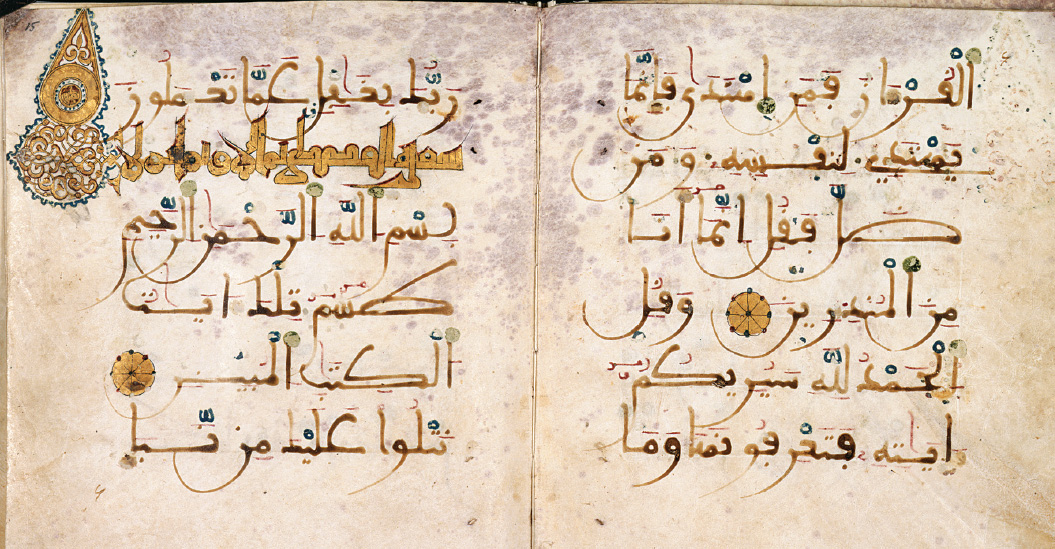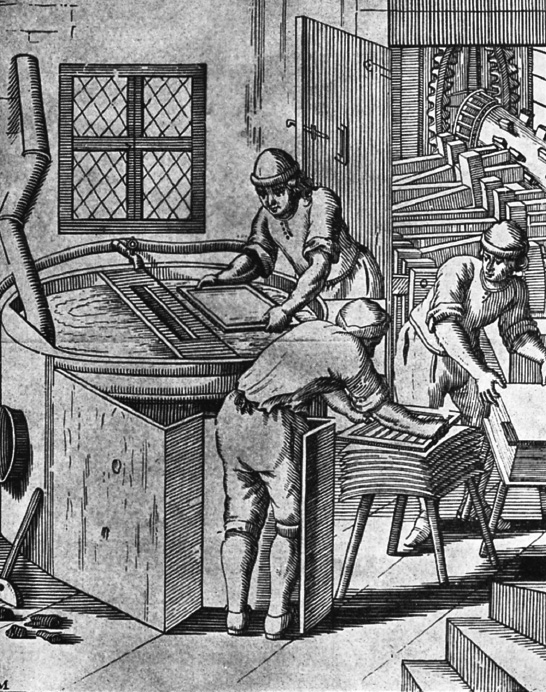Living in the Past: Muslim Technology: Advances in Papermaking

Along with scientific and medical knowledge, technological advances often entered Europe through Muslim Spain. One of these was papermaking. Ancient Egyptians had made a writing surface by weaving pounded papyrus stalks (the origin of the word paper), and sometime before 100 B.C.E. the Chinese invented paper that could be made from many different materials. They shredded and mashed rags and woody plant fibers in water to make a pulp, dipped a large, flat wire screen into this pulp to form a mat of fibers, and pressed the resulting sheet between layers of felt to dry. The Chinese used paper for wrapping and writing, and merchants and Buddhist missionaries carried the skills of papermaking to Samarkand in Central Asia (see Map 8.1). When this area was conquered by Arab armies, papermaking techniques spread into Muslim areas. Muslim papermakers improved on Chinese techniques, producing thicker and smoother sheets by using starch to fill the pores in the surfaces of the sheets. They carried this new method to Iraq, Syria, Egypt, and the Maghrib (North Africa), from where it entered Spain. Paper mills that produced large quantities were opened in Baghdad around 800 and in Muslim Spain around 1100.
By that point, paper was the most common writing surface in the Muslim world, though Christian Europeans were still largely using parchment or vellum, both made in a time-consuming process from stretched animal skins. The oldest surviving Christian text on paper is the Missal of Silos, a prayer book written in the eleventh century by Christian monks at the abbey of Santo Domingos de Silos in northern Spain on paper made in Muslim mills. The first paper mill in Christian Europe was opened in Fabriano, Italy, around 1200, and other cities quickly followed. Paper allowed the expansion of business and government record keeping, providing an important tool for bureaucrats as well as scholars.


QUESTIONS FOR ANALYSIS
Question
8NmDuql2x9zUZCNhx34VBUX/K0sYuVvjoIcSyO5O8YYat80wh36qDiM4MwJj8IxibDAanjJtf7YCTNJI4VtWjhdndESA64EXlh1PpYjzel0=Question
YUwqdc6nZWs1jNoXM+A4v6L+q5f4etDPdzhQQ+d1xKRQIe33zAA1unghzQH8QElXkjifBWodgDovzKgfCUlKq0NtpG3G0bNZ87UFTNdHosyXYB4BgZbZJbwPjxb6Cz40jiRGajUlQutwnVb1EQZM8PEn/JrZKN6KBJni8aDt9JZtFZlF7g2UHAm1CGikuYx7Od0I1ajJzJMbWN+eQuestion
iSj+sxdrkrOi152wRT4VeH9M4UoCc5Mk2Cpyq3/qGFxyqX2/ruPQzhc4fEc4oRSzF12HhGrdLBvEYP2DR/dbYraPewwK2kkbH0lqYXhq6dW3OjhLHWgNbGQHvYBjPMokcKPnGZtmywwa9sh5x4Osy9WJlUf6TMEvSh1lT1YEYoho/1XYP/+BU40Sn20FJPdUbUQI/6h30O6hH3TK